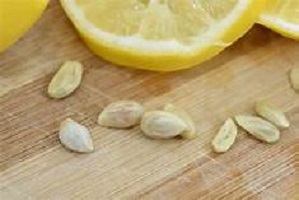Tamarind Paste Substitute: 5 Best Options
Tamarind Paste Substitute: 5 Best Options

If you need tamarind paste for a dish but can’t find it, there are several tamarind paste replacements you can use.
Many of these options are mixtures, such as Worcestershire sauce, water, brown sugar, lemon juice, tomato paste, or a lime juice and brown sugar mix.
If you don’t want to make a mixture, consider plain rice vinegar, pomegranate molasses, or mango chutney as a tamarind paste substitute. What you use depends depend on the recipe and how much tamarind paste you require.
Related >>>
Table of Contents
What Is Tamarind Paste? Tamarind Paste Substitute
Tamarind paste is made from the tamarind tree’s edible fruit. The fruit has a sweet and sour flavor, and the paste has a similar flavor profile to fresh tamarind, albeit more concentrated.
Like lemon juice, tamarind paste has a mild acidity, but not as much as apple cider vinegar.
Producers prepare tamarind paste by cooking tamarind pods in boiling water for about an hour, then straining the liquid to reveal the tamarind pulp, which absorbs the hot water and forms a thick paste.
When making tamarind paste at home, it’s critical not to force the tamarind through the sieve, as the muck and stones will end up in the finished paste.
Tamarind Paste’s Uses
Tamarind paste has a sweet, acidic, fruity, and tangy flavor that goes well with a variety of dishes. The following are five methods to use tamarind paste:
- Tamarind paste is used in candy, particularly in Mexican candies. The candies are sweet and chewy, with a strong tamarind flavor. The candies come in a variety of shapes and sizes, ranging from tamarind rope to hard candy.
- In Indian and Middle Eastern cuisines, tamarind chutney is a popular condiment. Tamarind chutney is rich, sweet, and acidic, with a mango taste in most cases either made with mango powder (also known as amchur powder or amchoor).
- Pad thai: To make a basic pad thai dish, combine tamarind paste, fish sauce, brown sugar, lime juice, and a variety of other ingredients, such as tofu, chicken, peanuts, and bean sprouts. In Thailand, tamarind paste is one of the most frequent ingredients.
- Stir-fry: Adding tamarind paste to a traditional Chinese stir-fry gives it a distinct Thai flavor. To offset the tamarind flavor, add ginger, onions, and citrus juice.
- Tamarind balls: Tamarind balls are a popular treat in the Caribbean. Cooks in Jamaica and Trinidad roll the fruit in sugar; in other areas, the paste is rolled into balls and then rolled in sugar.
Recommended Tamarind Paste Substitute
- Pomegranate’s molasses
Pomegranate molasses is a good tamarind paste replacement if you can locate it. Pomegranate molasses is made by thickening and sticking pomegranate juice. When done, it tastes sweet and sour, similar to tamarind paste, with a bitter undertone, making it a fantastic addition to Indian and Asian dishes.
- Brown Sugar and Lime Juice
This alternative is intriguing because it can be found in any grocery shop or even kept on hand. However, it lacks the flavor complexity that other choices provide. Even yet, most people don’t perceive a change because many recipes don’t call for much tamarind paste.
- Worcestershire sauce mix
Because tamarind paste is effective at tenderizing meat, some Worcestershire brands use it, thus this is a good place to start looking for a tamarind paste substitute.
- Rice vinegar
Rice vinegar contains the same sourness as tamarind paste, as well as an underlying sweetness. The thickness is the only issue. If you don’t mind your sauce being a little runnier than usual, use it in a 1:1 ratio Cornstarch can be used to thicken it up to the consistency of tamarind paste.
- Mango Chutney
Mango chutney is a great tamarind paste substitute since it is thick and, if you get the proper sort, tastes quite similar to tamarind paste. If your mango chutney is excessively sweet, add some lime or lemon juice to balance out the sweetness.
FAQs on Tamarind Paste Substitute
Can I Use Ketchup as a Substitute for Tamarind Paste?
Tamarind paste is frequently replaced with ketchup. To make it taste like tamarind paste, you’ll need to add fish sauce, oyster sauce, brown sugar, dark soy sauce, and rice vinegar.
Because there are so many more components, it’s best to go with a simpler substitute rather than spending a lot of money on the other sauces you’ll need to make a ketchup substitute.
What is the best tamarind paste substitute In Pad Thai or Sambar?
The greatest tamarind paste substitute in Pad Thai 2 tablespoons water, 3 tablespoons lemon juice, 12 cups tomato paste, 3 tablespoons Worcestershire sauce, and 2 tablespoons brown sugar any leftover paste can be stored in the refrigerator for up to one week.
What is an alternative to tamarind paste?
Lime juice (or occasionally white wine or rice vinegar) coupled with an equal amount of light brown sugar is a common substitute for tamarind.
What Flavor is Tamarind Paste?
Tamarind paste is a thick, sour sauce with a sweet citrus undertone and notes of caramel and smoke, making an exact substitute difficult to come by.
The flavor profile of your tamarind paste will be determined by how ripe the fruit was when it was produced. If you’re making tamarind paste from home, choose a ripe fruit for a sweeter flavor.
What Are the Ingredients for Tamarind Paste?
Tamarind is the major ingredient, which is a tropical fruit pod that is both sour and sweet. Tamarind can be purchased as a whole fruit or as a block of tamarind pulp that has had the seeds removed. Water, salt, and sugar are the other elements needed to make tamarind.
Can I Use Tamarind Sauce Instead of Tamarind Paste?
Tamarind concentration, often known as tamarind sauce, can be a substitute for tamarind paste. All you have to do is mix tamarind concentrate with water in a 1:2 ratio. As a result, for every teaspoon of concentrate used, two tablespoons of water should be added.
Can I Use Tamarind Powder as a Tamarind paste Substitute?
It’s not a good idea because tamarind powder and tamarind paste have quite different flavors and consistency. Furthermore, in powder form, it will interact with your dish differently than in paste form, especially since paste contains water, sugar, and salt.
Where Can I Find Tamarind Paste?
Tamarind paste can sometimes be found in the international area of your local supermarket. Start by looking through the Asian and Indian sections. If you can’t find it, try a specialist store or market that specializes in Asian or Indian cuisine.
Summary
Tamarind paste has a distinct flavor profile, but it doesn’t rule out the possibility of duplicating it.
You can choose from a range of alternatives, or you can make your own from scratch. Use your imagination to identify sweet and sour agents to bring out the best in each dish when cooking Asian food.
If it doesn’t work out, there’s still Amazon and other internet vendors. Finally, you can manufacture it yourself if you can’t find tamarind paste but can obtain the pulp or the whole fruit.


